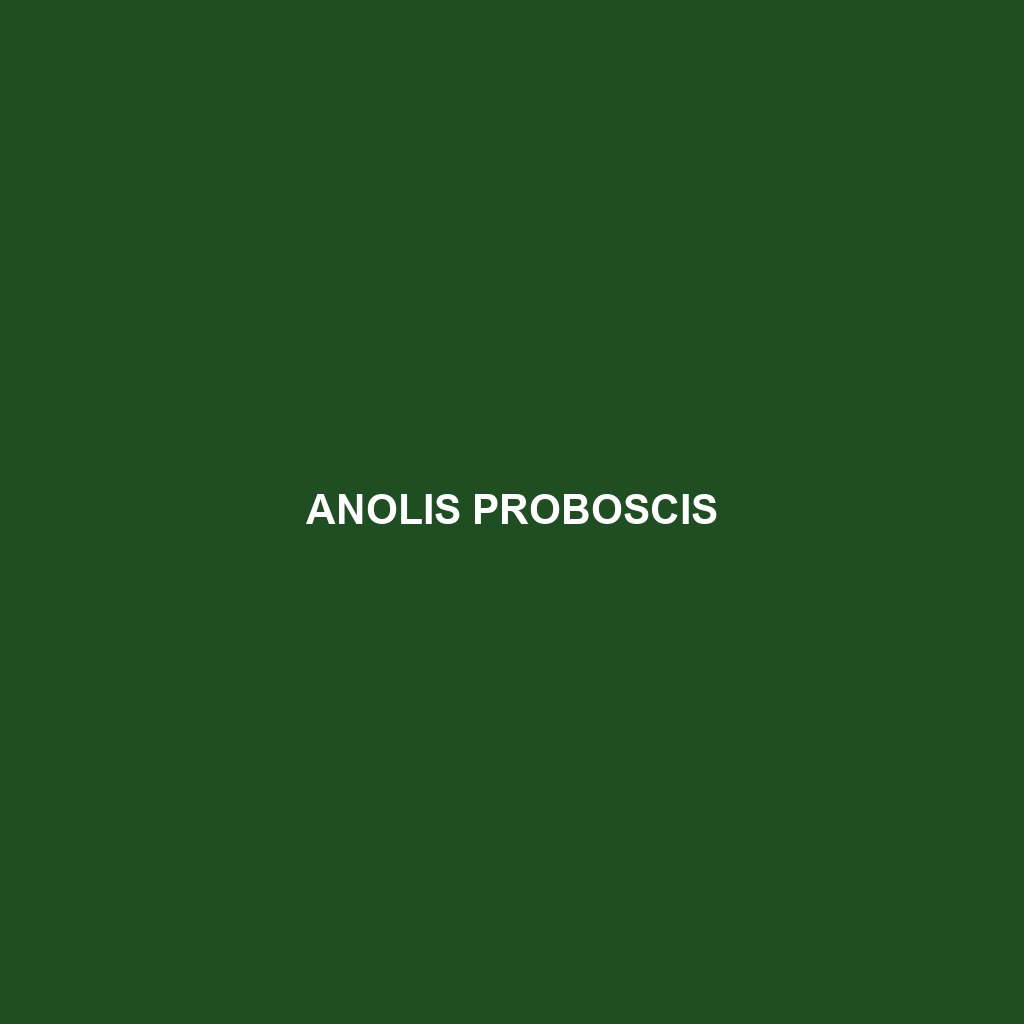Common Name: Anolis proboscis
Scientific Name: Anolis proboscis
Habitat:
Anolis proboscis, commonly known as the proboscis anole, is primarily found in the humid cloud forests of Ecuador and Colombia. These lizards thrive in environments characterized by high humidity and dense vegetation, often residing on branches and in the understory of tropical forests. Their preference for moist, elevated habitats allows them to escape potential terrestrial predators while enjoying a rich diversity of insects.
Physical Characteristics:
This intriguing species exhibits remarkable features, including a distinctive long, proboscis-like appendage extending from its snout, which can measure up to 1.5 inches long. The body length of Anolis proboscis ranges from 4 to 6 inches, with a vibrant coloration that includes shades of green, brown, and yellow, allowing it to blend seamlessly with its leafy surroundings. Males are typically larger than females and showcase more vivid colors, especially during mating displays.
Behavior:
Anolis proboscis displays fascinating behaviors such as territorial displays and elaborate courtship rituals. Males often engage in push-up displays and throat flaring to attract females and establish dominance over their territories. These lizards are diurnal and are commonly seen basking in the sunlight or actively foraging for food. Additionally, the species is known for its arboreal agility, which aids in navigating the complex structures of its forest habitat.
Diet:
The diet of Anolis proboscis primarily consists of insects, including crickets, ants, and caterpillars. They are opportunistic feeders, using their keen eyesight to spot prey from a distance before rapidly darting to capture it. This lizard plays a key role in controlling insect populations within its ecosystem, making it an important component of forest health.
Reproduction:
Anolis proboscis breeds during the rainy season, which typically occurs from March to September. Females lay clutches of 1 to 3 eggs, which they bury in moist soil or leaf litter. After an incubation period of approximately 30 to 60 days, hatchlings emerge fully formed and begin their independent lives. Mating behaviors often involve intricate displays that reinforce the dominance of males over their territories.
Conservation Status:
Currently, Anolis proboscis is classified as vulnerable due to habitat loss resulting from deforestation and agricultural expansion. Conservation efforts are crucial to protect these unique lizards and their natural habitats. Organizations are working to raise awareness and implement protective measures in their native regions.
Interesting Facts:
One fascinating aspect of Anolis proboscis is its ability to change color, which aids in camouflage and communication with other lizards. Additionally, the elongated snout of this species is believed to assist in feeding, allowing it to reach insects that are not accessible to other anoles. Its unique morphology and ecological adaptations make it a subject of interest for researchers and nature enthusiasts alike.
Role in Ecosystem:
Anolis proboscis plays a vital role in its ecosystem by acting as both a predator and prey. As an insectivore, it helps regulate insect populations, contributing to the balance of its forest environment. Furthermore, it serves as a food source for various birds and larger reptiles, illustrating its importance within the food web. The health of Anolis proboscis populations is indicative of the overall health of their tropical forest habitats.
